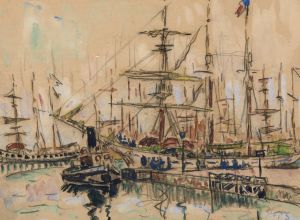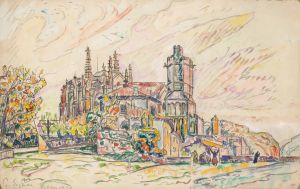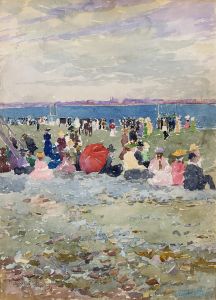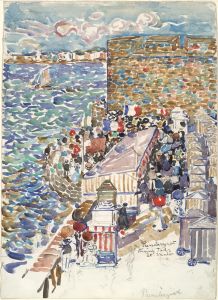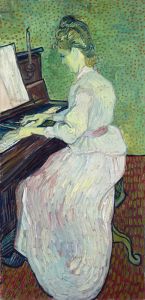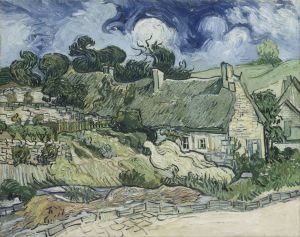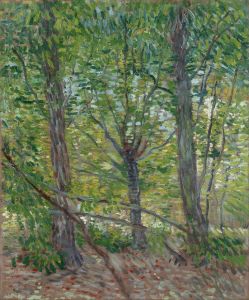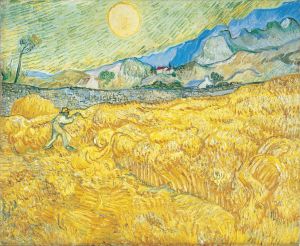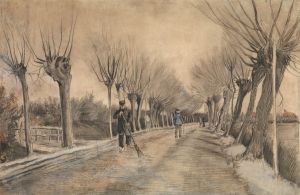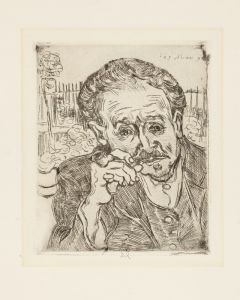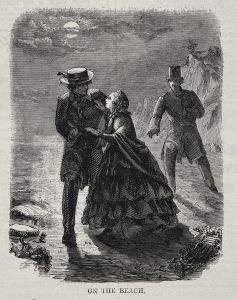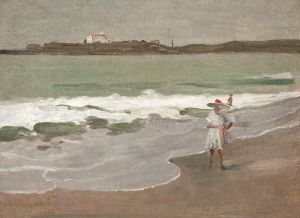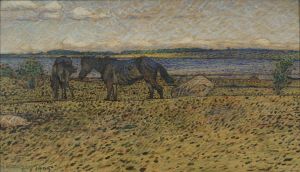
Beach at Scheveningen
A hand-painted replica of Vincent van Gogh’s masterpiece Beach at Scheveningen, meticulously crafted by professional artists to capture the true essence of the original. Each piece is created with museum-quality canvas and rare mineral pigments, carefully painted by experienced artists with delicate brushstrokes and rich, layered colors to perfectly recreate the texture of the original artwork. Unlike machine-printed reproductions, this hand-painted version brings the painting to life, infused with the artist’s emotions and skill in every stroke. Whether for personal collection or home decoration, it instantly elevates the artistic atmosphere of any space.
Beach at Scheveningen is an early painting by the Dutch Post-Impressionist artist Vincent van Gogh. Created in August 1882, the work is part of Van Gogh's Hague period, during which he focused on capturing the everyday life and landscapes of the Netherlands. This oil painting on canvas depicts the beach at Scheveningen, a coastal district near The Hague, during a stormy day. It is one of Van Gogh's earliest known oil paintings and reflects his developing style and interest in natural scenes.
The painting measures 34.5 cm by 51 cm (13.6 in by 20.1 in) and is characterized by its textured brushstrokes and muted color palette, which effectively convey the turbulent weather and the movement of the sea and sky. The scene includes figures of fishermen and women, as well as boats along the shore, emphasizing the connection between the local community and the sea. Van Gogh's use of thick, expressive brushstrokes in this work foreshadows the techniques he would later develop in his more mature works.
Van Gogh painted Beach at Scheveningen outdoors, en plein air, a practice that allowed him to directly observe and capture the dynamic atmosphere of the scene. This approach was influenced by the Barbizon School and other artists who sought to depict nature with immediacy and authenticity. The painting reflects Van Gogh's early efforts to master oil painting and his dedication to portraying the natural world with emotional intensity.
The painting is notable for its historical significance within Van Gogh's oeuvre, as it marks an important step in his artistic development. It also provides insight into his life during his time in The Hague, where he was studying under the guidance of his cousin-in-law, the painter Anton Mauve. During this period, Van Gogh was deeply focused on improving his technical skills and exploring themes of rural and working-class life.
Beach at Scheveningen is part of the collection of the Van Gogh Museum in Amsterdam, the Netherlands. It was one of two paintings stolen from the museum in 2002 but was recovered in 2016 in Italy. The theft and recovery of the painting brought renewed attention to its significance within Van Gogh's body of work.
This painting remains an important example of Van Gogh's early exploration of oil painting and his commitment to capturing the essence of the world around him.





